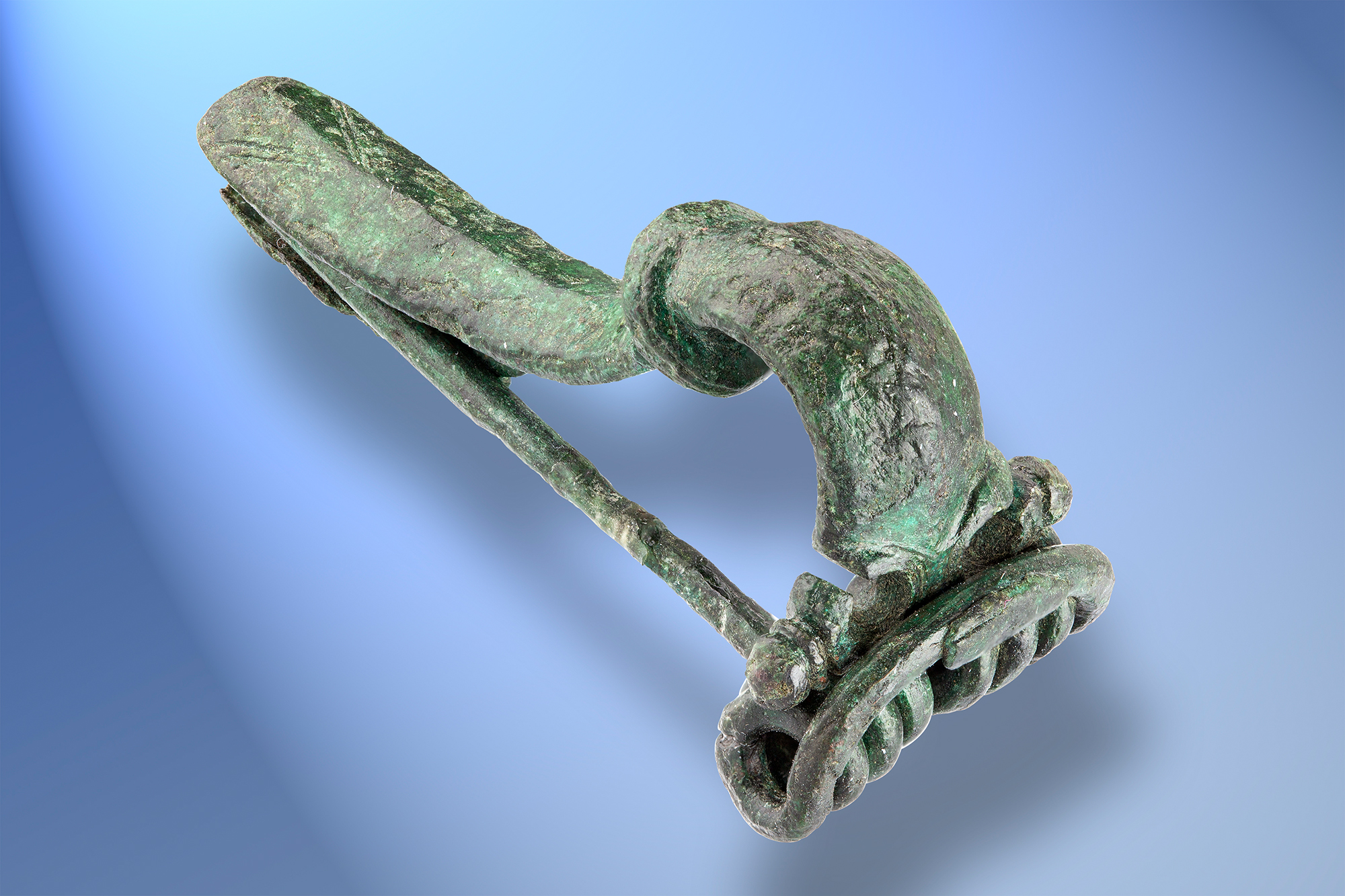Super článek a poznatky - mé srdcové období.
A 2000-year-old metallurgical "signature" of the Roman legion confirms the site of the Battle of Teutoburg
Categories: Nálezy nejenom s detektorem v západní Evropě
A new method of chemical analysis has helped to identify the metal finds of the Roman 19th Legion from the site of the Battle of Teutoburg Forest in Kalkries, Germany. By comparing trace elements of non-ferrous metals, the researchers were able to match the finds to this legion and thoseconfirm the site of one of the most important events in the history of Rome and the rest of ancient Europe.
In 9 AD, Publius Quinctilius Varus "managed" to turn a simple army movement into a military disaster that changed European history and set up one of the greatest Roman defeats in history. Despite strong warnings, he blithely led the 17th, 18th and 19th Legions, three cavalry units, six cohorts of auxiliary troops and some 5,000 cavalrymen through a landscape of marshes and dark forests.
The long, snake-like line of Roman troops was at the mercy of the Germanic warriors in an unfamiliar and swamp-ridden landscape. 15,000 to 20,000 Roman soldiers died on the spot, less than a thousand Romans survived. The defeat resulted in the loss of most of Germania and the creation of a heavily militarized frontier that would endure for the next 400 years.
The site of the battle remained forgotten until 1989, when metal detectors found coins from the Augustan era and lead projectiles. Since then, more than 7,000 objects have been uncovered at Kalkriese, ranging from a complete horse harness, everyday objects and the oldest set of Roman plate armour ever discovered in Germany. It is undoubtedly the site of a major Roman battle from the 1st century. But its identification as a Teutoburg battlefield took several more decades, and the subject is still hotly debated - it could also have been a battle during the campaign six years later... It is not possible to date archaeological finds within six years.
But a new study has confirmed that non-ferrous mass spectrometry can define the characteristic trace element composition of an artefact. Because each Roman legion had its own blacksmiths who were always available to repair weapons during campaigns. and equipment, all metals have their own distinctive chemical signature - not unlike unique fingerprints. The method therefore leads to a conclusive linking of a metal object to a specific legion, a major archaeological breakthrough in dating and identifying complex battlefields, as it did for Kalkries.
The metals used for repairs in the camp forges contain trace elements that could not have been noticed or deliberately tampered with by the Roman forges. These elements come from the raw materials of ore or additives and also traces from tools. Over time, each legion developed a characteristic pattern of trace element composition. "In this way, we can assign to the legions a metallurgical fingerprint specific to each legion for which we knowwe know the location of the camps," explained Annika Diekmann, a researcher at the German Mining Museum in Bochum.
All the Roman non-ferrous metals from Kalkriese were therefore sent for testing, where samples were taken and comparedwith non-ferrous metals from many Roman sites where it is known from written sources which legions were stationed there. Once the analysis is complete, it is clear that especially the 19. Legion, which was stationed at Dangstetten in southern Germany, is distinguishable from other legions that were only deployed in Germany during Roman retaliatory campaigns on the basis of the composition of trace elements in the metals.
"When comparing the finds from Kalkries with those from other sites, we found that the artifacts from Dangstetten and Kalkries show considerable similarities. In contrast, the finds that come from the sites of camps whose legions did not perish in the Battle of Varus arediffer markedly from the finds from Kalkriese and thus show significant differences from the finds there. For archaeology, the analysis of legion-specific metallurgical fingerprints is thus a huge opportunity and opens up completely new possibilities," said Dr. Stephen Burmeister.
"It is great for the Leibniz Association Research Museum to be able to demonstrate that material analysis can offer a valuable contribution to historical research," added Prof. Dr. Michael Prange, Head of Research at the German Mining Museum in Bochum. It is clear to all involved that further research is still needed and that the data obtained will have to be further evaluated.
Roman Nemec
Sources: bergbaumuseum.de, arkeonews.net

Roman ceremonial mask found at Kalkries

Teutoburg Forest

Gold coins from the hill of the Teutoburg Forest

Fibula from the battlefield

Roman belt buckle

Anika Diekmann

Roman fittings and pendant
The article is included in categories:
- Archive of articles > Archaeology > Finds and rescue research abroad > Nálezy nejenom s detektorem v západní Evropě
Post
Velice zajimavy clanek. Snad je k tomu uz nekde zverejnena studie.
Jenom drobna poznamka/dotaz k popisku fotky. Je to urcite obradni maska? Podle meho to bude maska clena rimskeho jezdectva.
Je to tak.
https://cz.pinterest.com/pin/170503535875782545/
Asi to tak bude, já jsem ji našel zde a čerpal z českého popisu obrázku: https://cs.wikipedia.org/wiki/Bitva_v_Teutobursk%C3%A9m_lese#/media/Soubor:Maske_Museum_Kalkriese_1.jpg
Super čtení.
Zajímavý jako vždy. 
Zajímavý kousek, ten vpravo nahoře na posledním snímku. Vždy jsem byl přesvědčený, že oblíbené slovenské gesto ,,figa borová,, je něco novodobého. Zřejmě ne. A ten zbytek .... 
Fany, ja ked som na to pozrel tak som videl len tu lavu časť vyzera to jako penis s vajcami :D
Kazdopadne krásny článok
úžasný. díky za článek
Parádní počteníčko, hodně zajímavé 


















